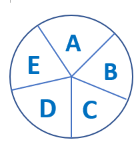2. Methodological aspects
1. Causation and correlation
(This section is organised in the form of a book, please follow the blue arrows to navigate through the book or by following the navigation panel on the right side of the page.)
As mentioned earlier, central activities of pharmacoepidemiology involve inquiry into the causes of illness or other outcomes of interest, such as medication utilisation (i.e., does a medicine or therapeutic intervention cause a specific outcome?). There may be no association between medicines use and an observed outcome or there may be a non-causal association (correlation), which means the association or relationship between the medicine and outcome might have been observed by chance or because of some systematic error or faulty conclusion.
An understanding of the concept of causation versus correlation is important.

Source: https://xkcd.com/925/
While causation and correlation can exist at the same time, correlation does not imply causation. Causation explicitly applies to cases where action A causes outcome B. On the other hand, correlation is simply a relationship. Action A relates to Action B—but one event doesn’t necessarily cause the other event to happen. We cannot simply assume causation even if we see two events happening, seemingly together, and conclude there is a cause-and-effect relationship where the dependent event is the result of an independent event. There are so many other possibilities for an association, including:
- The opposite is true: B actually causes A.
- The two are correlated, but there’s more to it: A and B are correlated, but they are actually caused by C.
- There’s another variable involved: A does cause B—as long as D happens.
- There is a chain reaction: A causes E, which leads E to cause B (but you only saw that A causes B from your own eyes).
Consider the following:

This circle represents a single causal mechanism for an effect. Each letter represents one component cause, which is one element of the causal process. For the effect to occur, all of the component causes must play their part in the process.
When we observe cause and effect, such as the simple action of flipping a switch on a wall to turn on a light, we may think that moving the switch is all it takes to cause the light to turn on. But that is true only if certain other conditions are met:
1) The bulb is still working.
2) The wiring in the walls is intact and makes a circuit.
3) There is electrical current applied to the circuit.
- If all of these conditions are met, flipping the switch makes the light work. Each of the conditions, along with flipping the switch, is an essential component of the causal mechanism, which we refer to as a ‘component cause’. The effect (of turning on the light) can be prevented by removing any one of the component causes. Note that some of the component causes, e.g., wiring in the walls, may have occurred long in the past.
- We can think about causes of diseases in the same way. The diagram of causal components symbolises the elements of a causal mechanism. For an effect to occur, the various components of a causal mechanism must all interact in an intricate process and sequence. The exact nature of the interaction, and the sequence of actions, is left unspecified in the diagram.